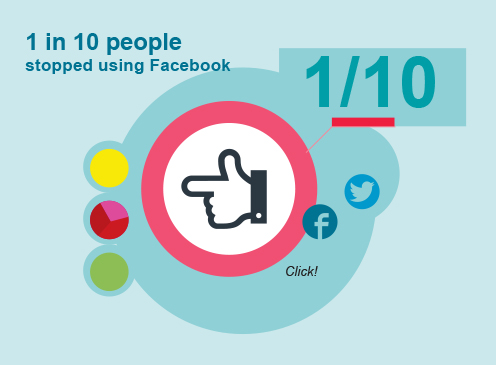Why jumping on the Facebook bandwagon may not be the right choice for your business…

Social media misconceptions:
These days, most firms acknowledge the need to incorporate some form of social media into their marketing – not least because, well, “everyone’s doing it”. And no wonder.
Facebook alone provides an online home to 2.6bn active users (Source: Statista,2020).
Factor in Twitter (339m monthly active user accounts) and professional network LinkedIn (303m active monthly users) and you’d be forgiven for abandoning your traditional marketing channels altogether in favour of a full-on assault on ‘the social web’.
You may be surprised to learn, however, that many companies have actually chosen to ‘give social the swerve’. And with some justification.
For whilst Facebook and the like provide an unrivalled (in scale, at least), platform for larger organisations, locally focused and more ‘niche’ firms may find the audience for their content to be so narrow as to be cost-ineffective to reach via social networks.
Similarly, a number of demographics – maybe your own customers? – have yet to adopt social media in meaningful numbers; in particular, older users, though increasingly techno-literate, generally prefer more traditional methods of communication.
The message therefore is clear: do your homework before you ‘join the conversation’ – to ensure there’s a conversation to be had.
If your customers aren’t using social media, nor should you. And even if they are…. you should still think carefully before you commit.
To borrow from Bill Gates: content is king. And you’ll need adequate resources – be they in-house or outsourced – to deliver that content.
That’s not to say that your people will need formal marketing training. But they will require the skills, judgment, experience and availability to post original, informed and engaging copy regularly.
And to respond quickly and effectively to Comments, Posts and Messages – because companies that are seen to be unresponsive online may be perceived as being similarly unreliable in other areas too, such as customer service and support.
Other issues abound.
Uploading content can put a big dent in your bandwidth allowance. And possible exposure to viruses and malware may pose a significant threat to your IT systems.
Confidentiality issues too can arise: disgruntled employees have been known to leak sensitive information deliberately. And less savvy employees may do so inadvertently. So be very careful whom you authorise to speak on your company’s behalf.
Now the good news.
Done right, social networks allow you to connect with your customers, media and other stakeholders like never before. And contrary to popular belief, social success can be measured too – in terms of ‘vanity’ metrics (Fans, Followers), ‘engagement’ metrics (Shares, Comments) and even ‘sentiment’ (the prevailing ‘mood’, be it positive or negative, that surrounds your brand online).
But be warned: all social media metrics are not created equal. So beware the many nuances and anomalies that can skew your ROI calculations.
Just one example: ‘Total impressions’ on Twitter, for instance, are based on the number of Followers that exist at any given time. By contrast, Facebook data reflect the number of times users actually scroll past, and are thus exposed to, a Post.
Thankfully, a raft of sophisticated analytics tools now exist to help you meet the challenge of social marketing measurement.
At the outset however you’ll need to be confident that your investment will deliver a measurable return – in terms of brand recognition, engagement, loyalty and advocacy.
If not, you may be advised to buck the social media trend, and focus your attentions elsewhere.
VERSIO VITA LIMITED (11821196). Registered address: e-space North, 181 Wisbech Road, Littleport, Ely, England, CB6 1RA
